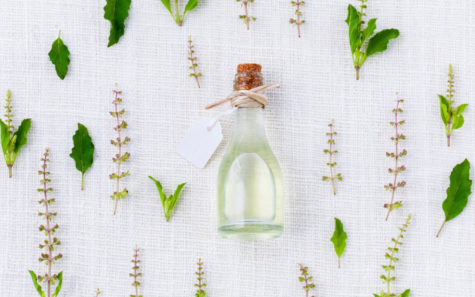How To Make Tinctures
Tinctures are among the most important methods of herbal medicine making you can learn, because of their potency, versatility, portability, and long shelf life. Fortunately, making a good tincture isn’t much harder than making a nice cup of tea.
Administration and Dosage Guidelines
Tincture doses are usually measured by the dropperful, with the assumption that you’re working from a dose bottle that is 1 to 4 fluid ounces in size and has a dropper top. Squeezing the dropper and allowing it to fill as much as possible makes 1 “dropperful” even though the entire glass dropper won’t be filled to the top. A dropperful equals approximately 30 drops. Measured strictly, this will be about 1 millilitre of liquid per dropperful.
Most tinctures are taken in doses of 1 to 4 droppersful, 3 to 5 times per day.
If you don’t have any dropper tops on hand, use a teaspoon. One teaspoon is equivalent to about 5 millilitres, so if the remedy calls for a dose of 2 to 4 droppersful, you can use 1/2 to 1 teaspoon and it will be close enough.
Shelf Life and Storage Guidelines
Tinctures should be stored in colored glass bottles, or kept in a dark place, to prevent degradation from light exposure. For long-term storage, use a bottle with a flat cap rather than a dropper top – the rubber in the dropper will degrade over time if exposed to alcohol fumes.
If stored properly, tinctures will retain full potency for 5 to 10 years, or even longer.
Necessary Tools, Equipment, or Ingredients
- Herbs.
If using fresh, let wilt for a half day or so spread out on brown paper bags or a clean tabletop, this will allow some water content to evaporate. Then chop or run through a blender before you put in the jar and add the alcohol. - Vodka, or Brandy.
Other alcoholic beverages can be used as long as they are 80 or 100 proof (40 to 50 percent alcohol content). - Mason jars of various sizes for maceration.
- Dosage and storage bottles
- Strainers
- Funnels
- Labels
Preparing Remedies – Step by Step
Fill a mason jar half to three-fourths full with the herb you want to tincture. If using roots, which tend to swell in liquid, stay on the half-full side. If using leaves or flowers, fill to the three-fourths mark. Fill the jar to the top with alcohol.
Close securely and label the jar, including the date you started. For example: Chamomile tincture in vodka, 50 % alcohol, 1/3/2018.
Macerate (allow the herbs to infuse in the alcohol) for 4 weeks. Shake the bottle every day or so to encourage maximum constituent release. Otherwise, keep in a cool, dark place.
Strain, re-bottle in colored glass vials, and add the finish date to the label.
Pros
- Small amounts are effective.
For herbs with unappealing flavors, you can get an effective dose without having to drink a pot of tea.
- Versatile.
Tinctures can be taken as they are, blended into formulas, or mixed with other ingredients, as in elixirs and liniments.
- Portable.
Tincture dose bottles can be carried easily in a bag or stashed in a drawer at work, and are ready to take as soon as you need them.
- Long shelf life.
Tinctures can last decades if properly stored.
Cons
- Contain alcohol.
Tinctures cannot be used by those who cannot consume alcohol due to liver problems, being a recovering alcoholic, religious reasons, or other situations in which alcohol is not advised or appropriate.
- Preparation time.
Tinctures made by maceration take at least 2 weeks, usually 1 month, to be ready. You’ll have to plan ahead.
Additional Considerations
There is some variation in tincture-making processes, and more precise methods use weights and measures to arrive at a standardized ratio of plant matter to solvent often seen on a tincture bottle as a ratio such as 1:5, indicating that each 5 millilitres of tincture carries the equivalent of 1 gram of herb material. The simple maceration method described here will suffice in most situations.
You can use any alcohol you like for tincturing as long as it has a high enough alcohol content. For example, an excellent tincture of herbs for the urinary system might use gin because it already contains juniper, which is a urinary antiseptic herb. Tequila and catnip are also nice in combination.
Some plants require more alcohol, some more water. The vast majority of plants are fine to tincture in vodka or brandy (40 to 50% alcohol). When extracting resins, consider using grain alcohol (95% alcohol). When extracting mucilages use water with just enough alcohol to prevent molding (20% of the total) For shelf-stable preservation, 20% alcohol is the minimum.
You can tincture herbal powders, they just require a lot more shaking to extract well and are a bit more difficult to strain at the end.
Practically speaking, you’ll make larger amounts (pints to quarts) of individual plant tinctures, then blend them together in small amounts (2 to 8 fluid ounces) of formulas. As time goes on, you may find a lot of help from a particular formula and want to have more on hand, but wait until you’ve worked through your first few ounces ( to make sure you like it or know better how much you need) before you do that.
It’s also okay to tincture more than one plant together right from the start, rather than tincturing them all individually and then blending the tinctures.
Source: Herbal Medicine for Beginners
Rennie Luttrull: queen-annes-lace-seeds
Rosanna: Spignel aka Bald Money
Annamarie Squatrito: Fumitory
EILEEN Klinghagen: Pumpkin
Mahmudul Hasan: Celery



Leave a Reply